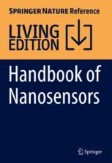Search
Search Results
-
Conducting Polymers Sensor
The remarkable advantages of conductive polymers make them desirable materials for modern science and technology. As a result, scientists have shown...
-
Conducting Polymers Sensor
The remarkable advantages of conductive polymers make them desirable materials for modern science and technology. As a result, scientists have shown...
-
Conducting Polymers for Pseudocapacitors
The energy crisis has increased the need for energy storage materials with high power and energy density. To solve the problem, scientists have...
-
Recent Advancements in Conducting Polymers for Biomedical Sensors
The healthcare system heavily relies on quantitative analyses of samples, including blood work, laboratory tests, vitals, imaging, health risk...
-
Electrically Conducting Smart Biodegradable Polymers and Their Applications
Smart biomaterials are designed on the principle of intrinsically conducting polymers. Conducting polymers based on polypyrrole (PPy), polylactic...
-
Factors affecting the electrical conductivity of conducting polymers
Metals had been significantly substituted by synthetic polymers in most of our daily requirements, thus relaxing our life. Out of many applied areas,...

-
Nanocomposites Based on Conducting Polymers and Nanomaterials Derived from Natural Polymers
There is a growing increase in the study of intrinsically conducting polymersConducting polymer as well as conducting polymerConducting polymer...
-
Conducting Polymers for Electrochemical Energy Storage Applications
With the invention of conducting polymers (CPs) starting in the nineteenth century, they have achieved incredible attraction in the field of energy...
-
Conducting Polymers for Water Splitting Applications
Water splitting is one of the most known chemical reactions in which water is converted to O2 and H2. H2 is regarded as an excellent fuel for the...
-
Effect of Graphite Powder and Carbon Black on Electrical Properties of Conducting Polymers
Conducting polymers are now widely used as electrode materials. But major problem of these electrodes are their poor electrical conductivity. It is...
-
Solution-processed wafer-scale nanoassembly of conducting polymers enables selective ultratrace nerve agent detection at low power
There is a great interest in develo** microelectronic devices based on nanostructured conducting polymers that can selectively electro-couple...

-
Electrically Conducting Smart Biodegradable Polymers and Their Applications
Smart biomaterials are designed on the principle of intrinsically conducting polymers. Conducting polymers based on polypyrrole (PPy), polylactic...
-
Intrinsically conducting polymers in flexible and stretchable resistive strain sensors: a review
Flexible and stretchable strain sensors are in great demand in advanced health care, human–machine interface, stretchable electronics, electronic...

-
Conducting Polymers and Their Composites for Supercapacitors
The growing demand for energy storage devices has initiated the interest of researchers in develo** high-performance supercapacitors....
-
One-pot synthesis of Vanadium-doped conducting polymers for using as electrode materials of supercapacitors
In this study, vanadium-doped polyaniline and vanadium-doped polypyrrole were made by chemical synthesis method, with the addition of vanadium...

-
Conducting Polymer Nanomaterials and Their Applications
A paradigm shift takes place in the fabrication of conducting polymers from bulky features with microsize to ultrafine features with nanometer range....
-
Integration of conducting polymers with MEMS lateral comb-drive resonator via electrodeposition for VOCs detection
Micro-electro-mechanical systems (MEMS)-based resonators have a wide range of current applications such as the detection of chemical and biological...

-
Conducting Polymers Based Nanocomposites for Supercapacitors
Among the unconventional electrically powered devices (supercapacitors, batteries, and fuel cells), supercapacitors have received significant...
-
Ion-tunable antiambipolarity in mixed ion–electron conducting polymers enables biorealistic organic electrochemical neurons
Biointegrated neuromorphic hardware holds promise for new protocols to record/regulate signalling in biological systems. Making such artificial...

-
Nanoscale engineering of conducting polymers for emerging applications in soft electronics
Soft electronics featuring exceptional mechanical compliance and excellent electrical performance hold great promise for applications in soft...

